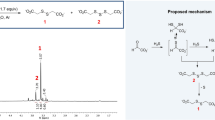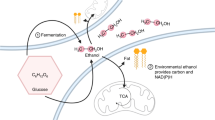Abstract
IT has been shown [above] that the enzyme preparation from acetone-dry small intestines of animals can synthesize a comparatively small amount of ascorbic acid. The probable explanation is that the enzyme is denatured by acetone treatment. This is suggested by the fact that the enzyme preparation obtained by extracting the fresh jejunum of the goat and guinea pig shows synthesis of a greater amount of ascorbic acid. Four hours incubation of the enzyme extract with glucose at pH 6·5 and in presence of added manganese produces the following results.
This is a preview of subscription content, access via your institution
Access options
Subscribe to this journal
Receive 51 print issues and online access
$199.00 per year
only $3.90 per issue
Buy this article
- Purchase on Springer Link
- Instant access to full article PDF
Prices may be subject to local taxes which are calculated during checkout
Similar content being viewed by others
Author information
Authors and Affiliations
Rights and permissions
About this article
Cite this article
RUDRA, M. Hexose Dehydrogenase. Nature 151, 641–642 (1943). https://doi.org/10.1038/151641b0
Issue Date:
DOI: https://doi.org/10.1038/151641b0
This article is cited by
-
Biosynthesis of vitamin C during germination
Proceedings / Indian Academy of Sciences (1950)
-
Biosynthesis of vitamin C during germination
Proceedings / Indian Academy of Sciences (1950)
Comments
By submitting a comment you agree to abide by our Terms and Community Guidelines. If you find something abusive or that does not comply with our terms or guidelines please flag it as inappropriate.



